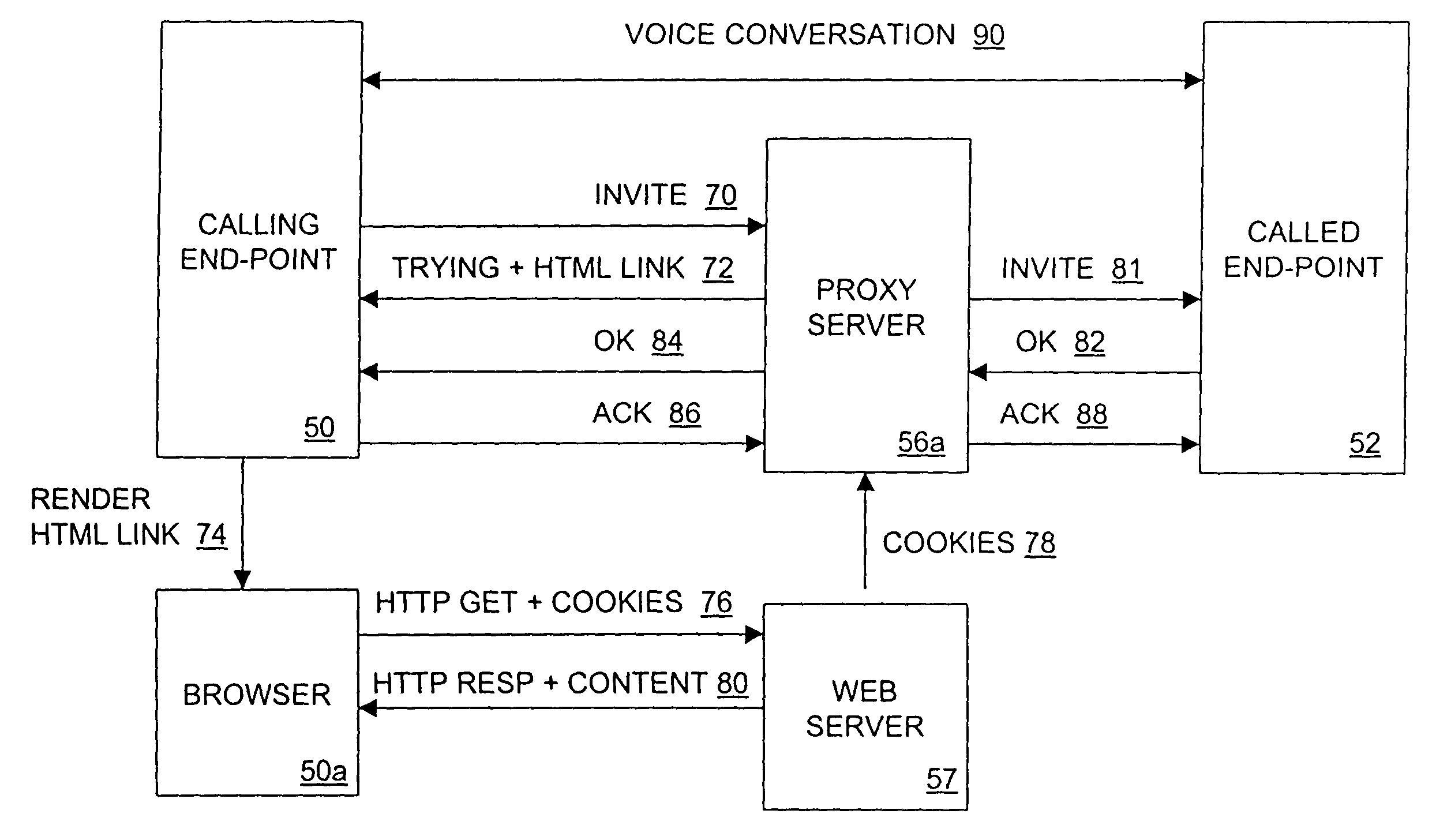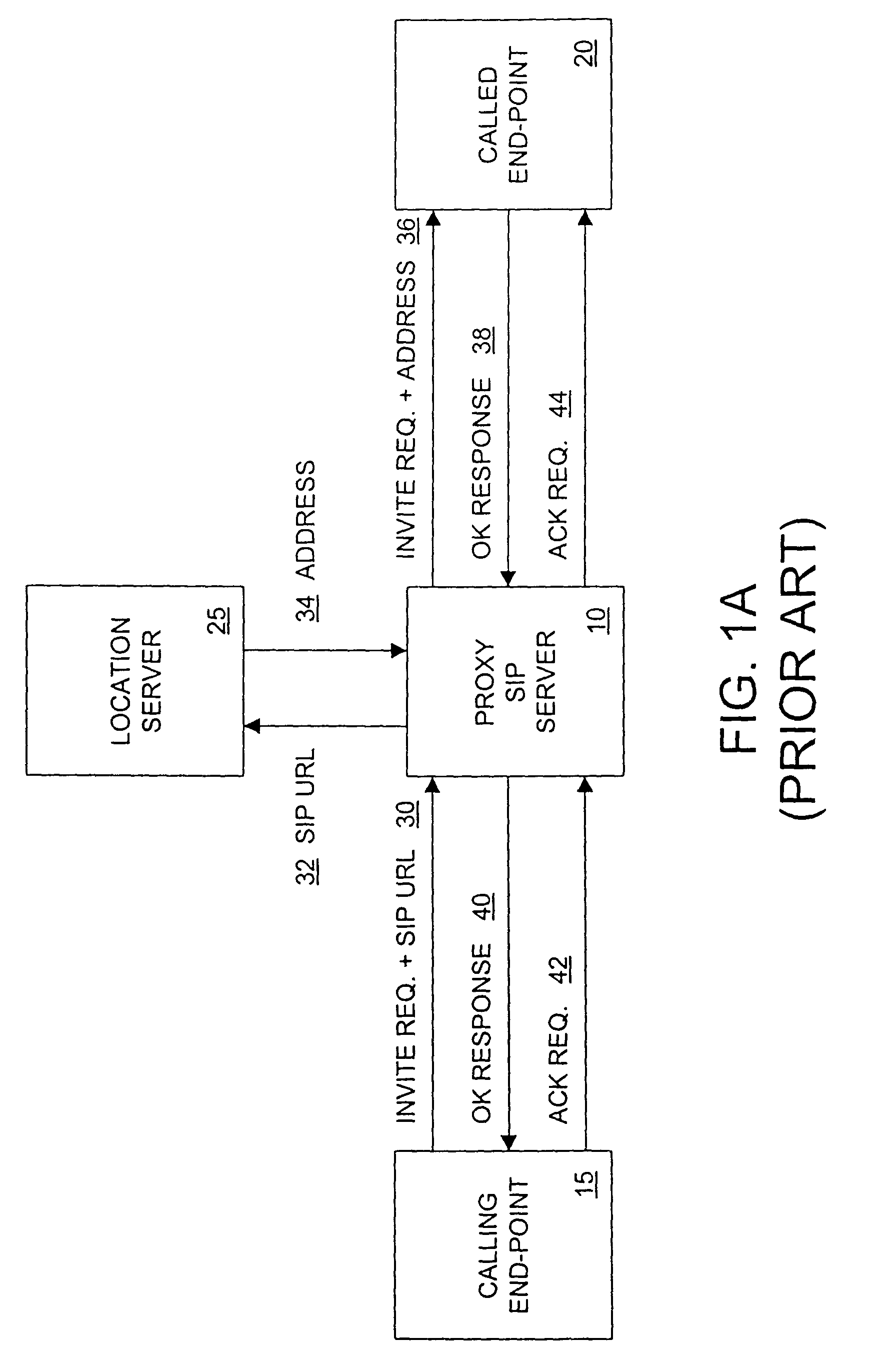Session initiation protocol routing using voice cookies
a voice cookie and session initiation technology, applied in the field of intelligent call routing in internet telephony systems, can solve the problems of limited information on the caller, cumbersome and inconvenient, slow call setup time, etc., and achieve the effect of intelligent determination of the callee address, better understanding and determination
- Summary
- Abstract
- Description
- Claims
- Application Information
AI Technical Summary
Benefits of technology
Problems solved by technology
Method used
Image
Examples
Embodiment Construction
[0028]FIG. 2 is a schematic block diagram of a communication system adhering to a session initiation protocol (SIP) according to one embodiment of the invention. The system includes a calling end-point 50 initiating a call that is directed to a called end-point 52 over a wide area network, such as, for example, a public internet54. The calling end-point 50, called end-point 52, and internet 54 preferably adhere to the SIP signaling protocol set forth in RFC 2543 .
[0029]The calling and called end-points 50, 52 are preferably SIP-enabled telephones, hand phones, personal computers, switches, routers, and / or the like. Preferably, each calling and called end-point is associated with an input device 59, 65 receiving input data, such as, for example, an input cable, a keyboard, a keypad, or the like. Each calling and called end-point is further associated with an output device 61, 63 presenting output data, such as, for example, an output cable, a display, or the like. The calling and cal...
PUM
 Login to View More
Login to View More Abstract
Description
Claims
Application Information
 Login to View More
Login to View More - R&D
- Intellectual Property
- Life Sciences
- Materials
- Tech Scout
- Unparalleled Data Quality
- Higher Quality Content
- 60% Fewer Hallucinations
Browse by: Latest US Patents, China's latest patents, Technical Efficacy Thesaurus, Application Domain, Technology Topic, Popular Technical Reports.
© 2025 PatSnap. All rights reserved.Legal|Privacy policy|Modern Slavery Act Transparency Statement|Sitemap|About US| Contact US: help@patsnap.com



